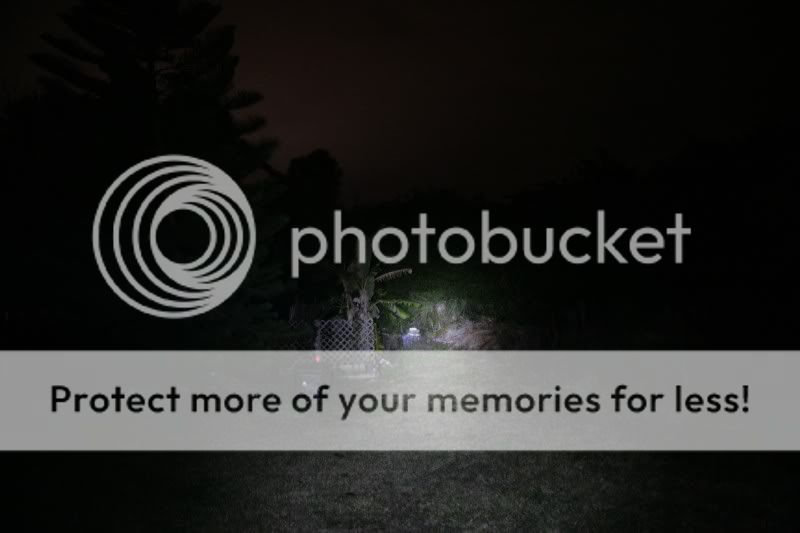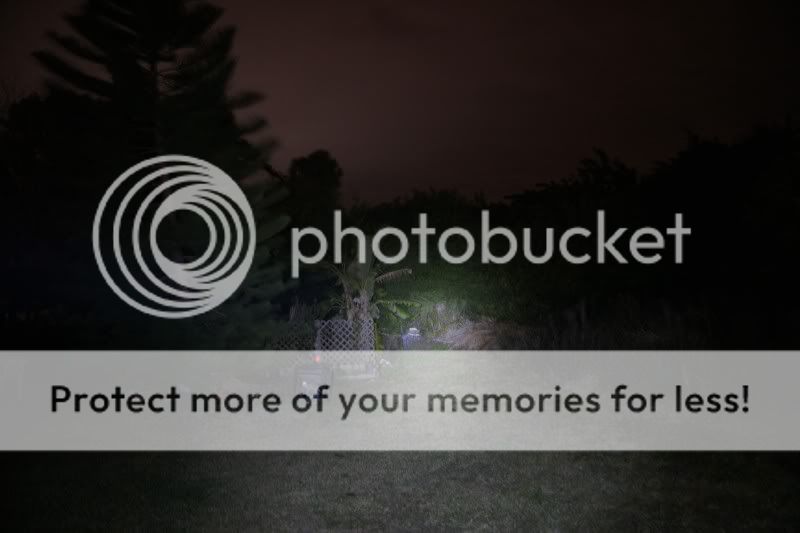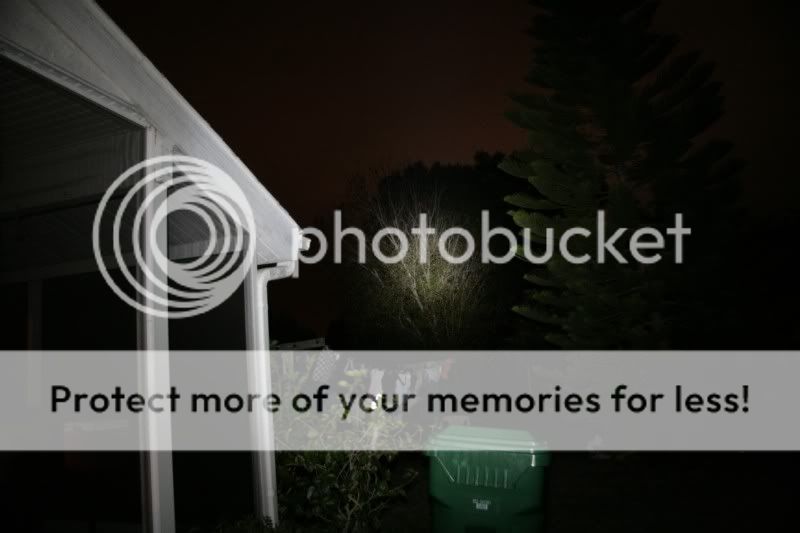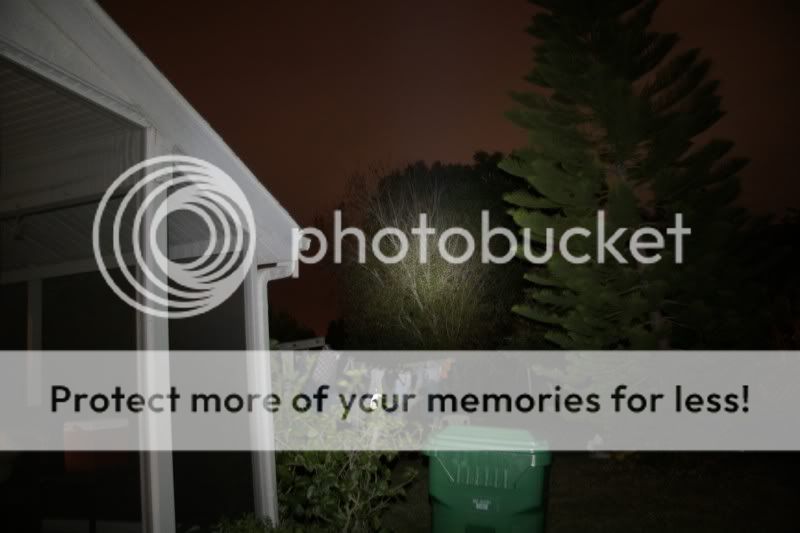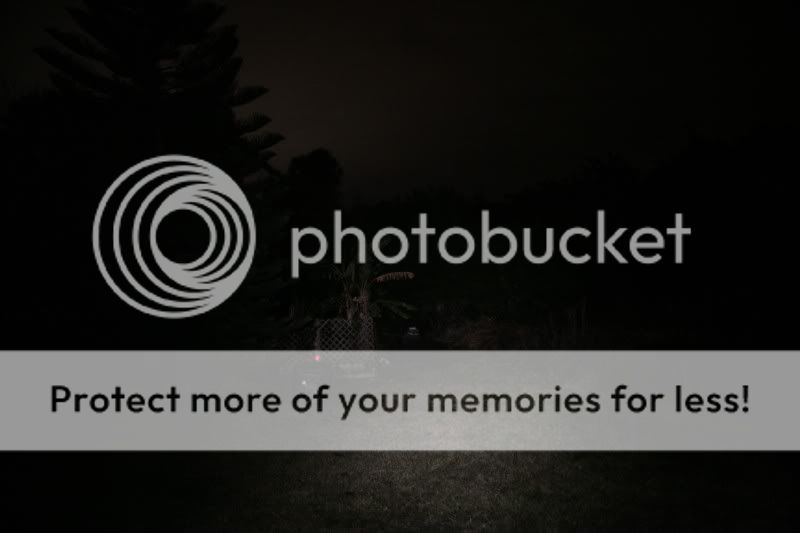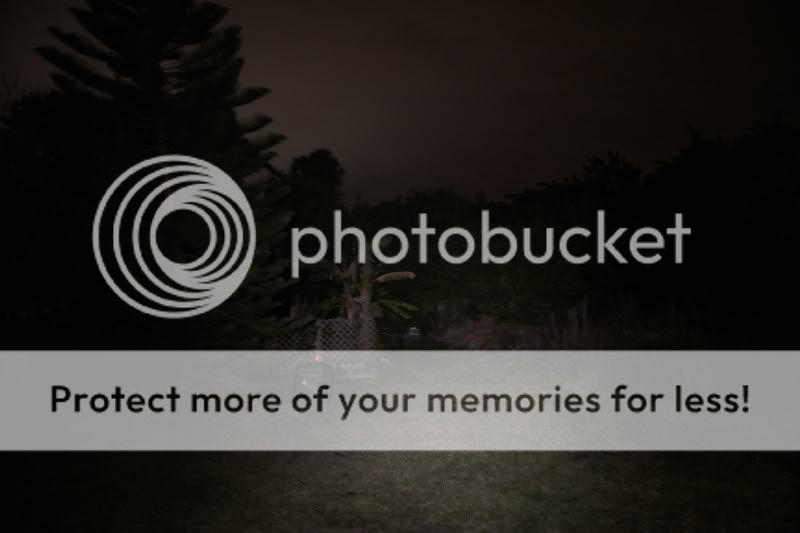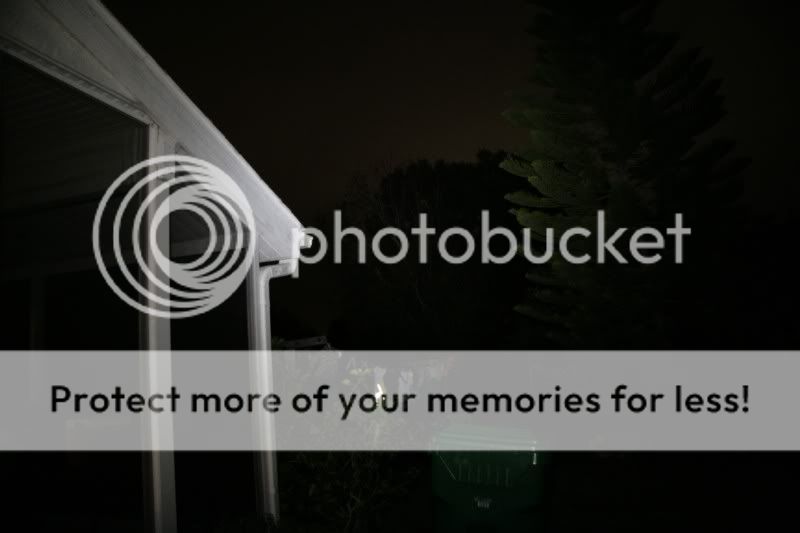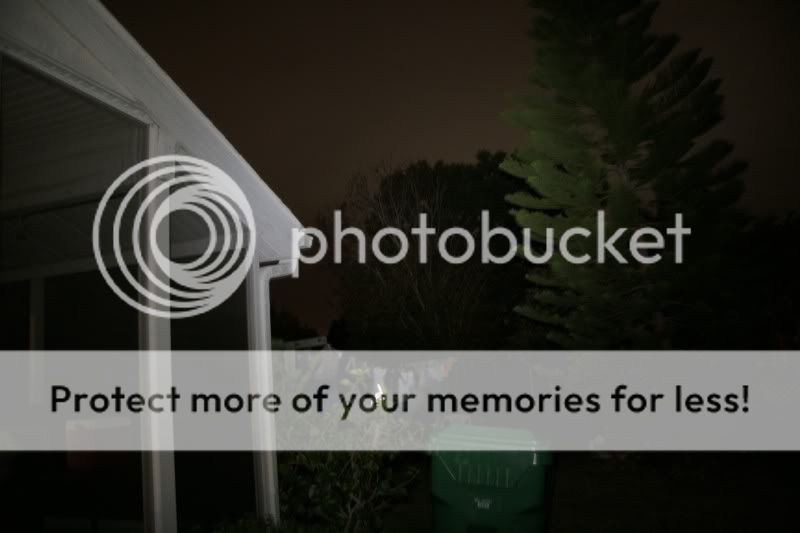Hi all.
After looking again at the beauty and the interesting feartures of HDR imaging in this thread started by KingSmono:
https://www.candlepowerforums.com/threads/216582
... I asked myself if maybe HDR could be used to finally make some realistic looking beamshots.
I didn't want to pollute the other thread with this tangent, so I started a new one.
Currently, we have the problem that digicams are mostly unable to represent the dynamic range of a typical beamshot that shows the hotspot and the corona, and we get shots like those:
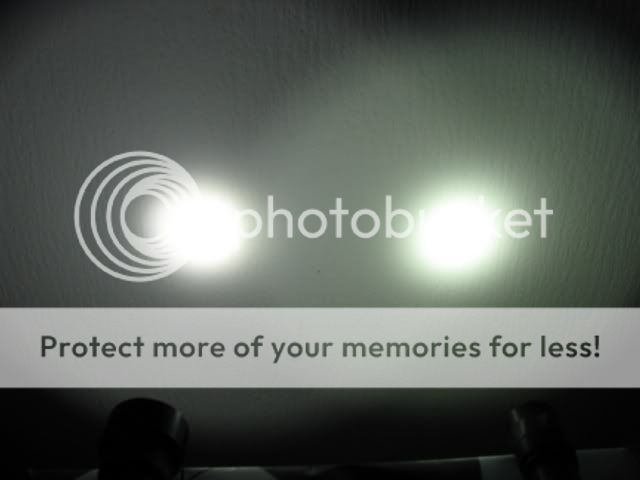
... well-pictured corona and over-exposed spot.
This can be countered by shooting a second, underexposed pic to represent the spot:
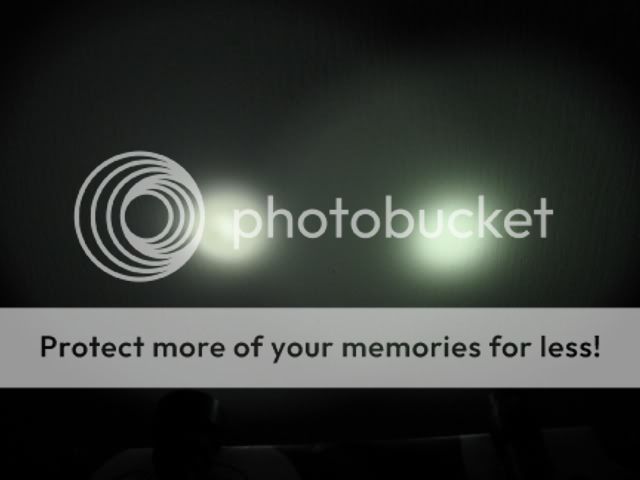
... but in the end, this is cumbersome and uncool, as it is not what the eyes actually see.
The effect can be less proneunced when shooting "real life" targets, depending on th etarget and the surroundings, but it is always there. I used the above images for a clear demo of what I mean.
Now ... HDR is a fusion of under- and overexposed pics into one frame and could allow for a better representation of a beam. The term "better" would mean "as the eye and brain actually see it" and not "scientifically correct". Because our perception does not care about scientific numbers, we see what we see, and I want to be able to show that to my fellwo flashaholics.
Here's a Wikipedia articel about HDR:
http://de.wikipedia.org/wiki/High_Dynamic_Range_Image
Can anyone who is capable of HDR imaging try this with a beamshot, preferrably outside and maybe white wall, too?
Thanx !!
bernie
After looking again at the beauty and the interesting feartures of HDR imaging in this thread started by KingSmono:
https://www.candlepowerforums.com/threads/216582
... I asked myself if maybe HDR could be used to finally make some realistic looking beamshots.
I didn't want to pollute the other thread with this tangent, so I started a new one.
Currently, we have the problem that digicams are mostly unable to represent the dynamic range of a typical beamshot that shows the hotspot and the corona, and we get shots like those:

... well-pictured corona and over-exposed spot.
This can be countered by shooting a second, underexposed pic to represent the spot:

... but in the end, this is cumbersome and uncool, as it is not what the eyes actually see.
The effect can be less proneunced when shooting "real life" targets, depending on th etarget and the surroundings, but it is always there. I used the above images for a clear demo of what I mean.
Now ... HDR is a fusion of under- and overexposed pics into one frame and could allow for a better representation of a beam. The term "better" would mean "as the eye and brain actually see it" and not "scientifically correct". Because our perception does not care about scientific numbers, we see what we see, and I want to be able to show that to my fellwo flashaholics.
Here's a Wikipedia articel about HDR:
http://de.wikipedia.org/wiki/High_Dynamic_Range_Image
Can anyone who is capable of HDR imaging try this with a beamshot, preferrably outside and maybe white wall, too?
Thanx !!
bernie



